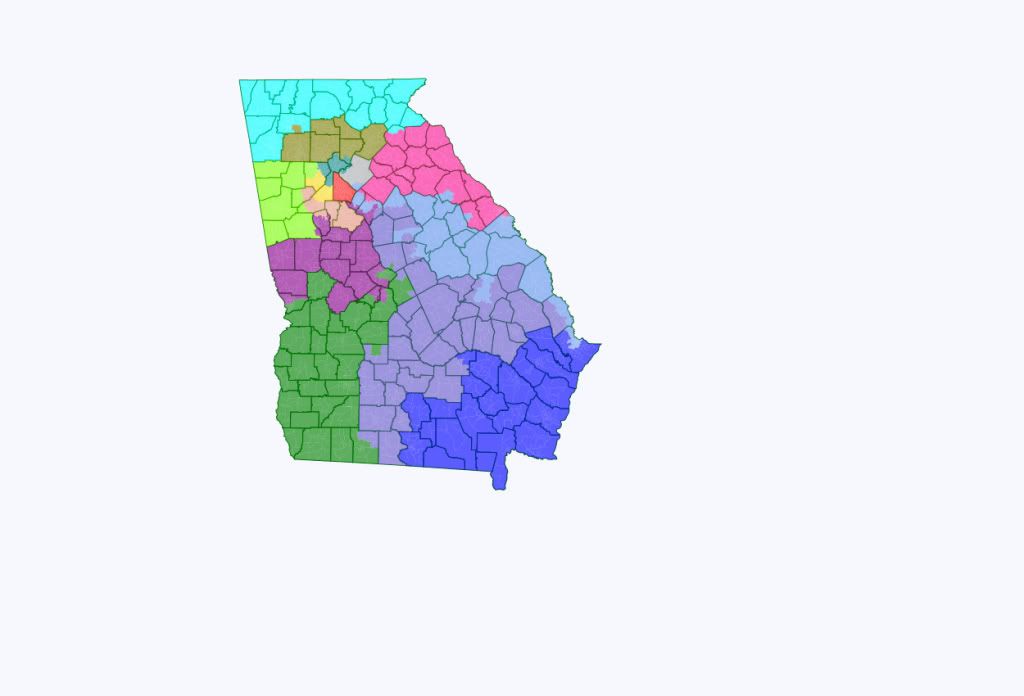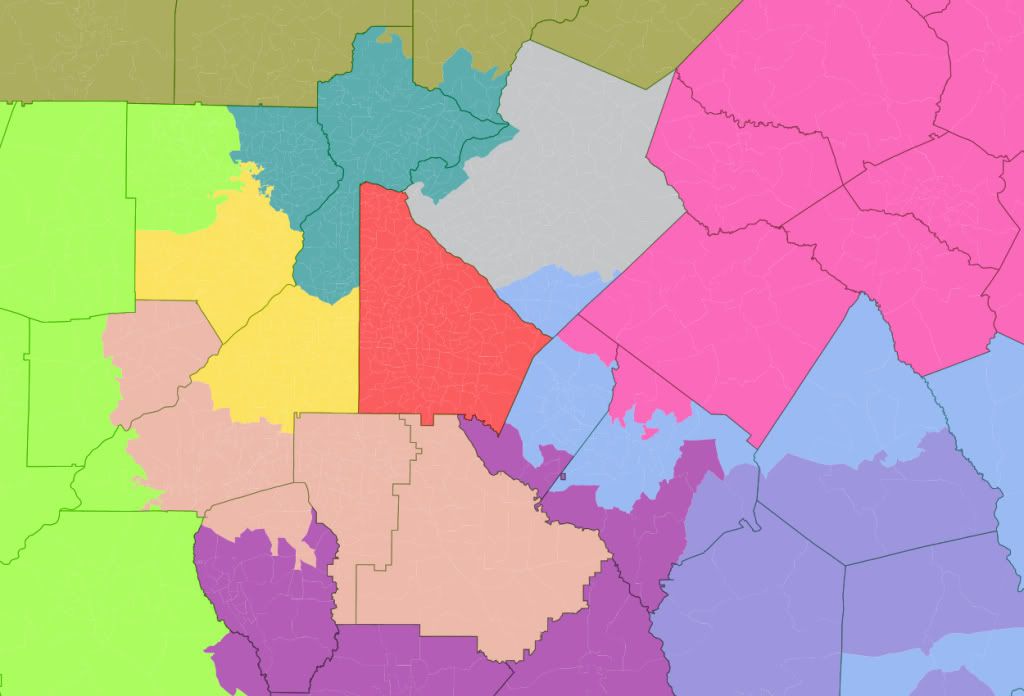Here is my take on what will happen in redistricting in upstate New York. Some ground rules…
1. I went in with the assumption two seats are going to be eliminated, one Republican, and one Democrat.
2. The Republican, most likely, will be Ann Marie Buerkle of NY 25. There are several reasons for this. First, she won a D+3 district in an upset, and she lives in the most Democratic part of the district (Syracuse), meaning giving her a much better district would be difficult. Second, she is considered too conservative for her district. Both mean she’s probably the most untenable incumbent. Finally, Bill Owens is going to need some Democrats to shore up his seat, and Syracuse is the best place to poach them.
3. The downstate district eliminated is not pictured on the map, but it is likely a NYC-based district not considered a VRA seat.
I didn’t redistrict the sixteen downstate districts for a number of reasons. First, racial demographics play a much larger role downstate in drawing districts than partisan data. We don’t have up-to-date racial data with the voting districts, and given the rapid shifts in NYC neighborhoods, it’s really needed. Second, I don’t know very distinctly the residences of existing reps. I can say I think the Democrats should have 2-3 majority-black districts (one in Queens, 1-2 in Brooklyn), and 3 majority Latino districts (2 in Bronx, one in Brooklyn and Queens).
I should also note that in keeping with NY law, I in all cases but one did not split up townships or cities. the exception was Rockland County. This was partially because Rockland County has huge “towns” similar to Long Island which were split under the old map. It’s also because within the towns there are huge ideological ranges, with Hasidic areas which were 90% McCain next to black areas which were 90% Obama.
Anyway, all of these seats should be reasonably safe for the incumbents.
Away we go…in descending order.

NY-27:
Incumbent: Brian Higgins
D+10
One of the four upstate districts which keeps its old number. Draws in tightly to Buffalo and becomes far more Democratic.

NY-26:
Incumbent: Tom Reed
R+7
Tom Reed gets a more compact district which hews closely to the southern tier, while taking in some narrowly Republican suburbs south of Buffalo. A bit more Republican than his old seat.

NY-25:
Incumbent: Chris Lee
R+9
The district is essentially NY-26. It gets smoothed out a bit, but still maintains itself as being mainly Republican suburbs of Buffalo and Rochester, with some rural areas in-between. Is more Republican than the old seat.

NY-24:
Incumbent: Louise Slaughter
D+10
The earmuffs are gone! Instead, the district takes in the more Democratic suburbs of Rochester, then makes a beeline Southeast to take in Icatha. This is a little less Democratic than the old seat, which was D+15, but it’s still quite safe.

NY-23:
Incumbent: Bill Owens
D+6
The second Upstate district which doesn’t change numbers. Bill Owens keeps the four most Democratic counties in North Country. He gets added to his district Syracuse, the most Democratic-leaning suburbs of it, and a salient connecting the two. A bit of a ugly gerrymander, but what can you do?

NY-22:
Incumbent: Richard Hanna
R+5
The district is broadly similar to the old NY-24, in that it still forms a U around Syracuse, although the U is much tighter. The district is marginally better than the old R+2.

NY-21:
Incumbent: Paul Tonko
D+6
Another district not switching numbers. It changes quite a bit, although it remains Albany-focused, shedding some of the more Republican areas to the west, but adding some Democratic-leaning areas in the mid-Hudson region. The PVI is essentially unchanged.

NY-20:
Incumbent: Chris Gibson
R+6
This district transforms quite a bit. It loses all of Duchess and most of Columbia counties, and swaps them for conservative areas mostly swiped from NY-23. Significantly better than the old PVI of R+2

NY-19:
Incumbent: Maurice Hinchey
D+5
This is more or less the old NY-22. It is more compact, having lost Icatha, but gained Poughkipsie. The PVI declined by one from the old PVI (D+5), but it should still be a solid seat for the Democrats.

NY-18:
Incumbent: Nan Hayworth
R+7
A major improvement from the old district, which had a PVI of R+3. Admittedly, the heavy gerrymandering of Rockland County helped a lot. I’m guessing that if I followed village lines I would have been less questionable here, but I think even with that the PVI shouldn’t have declined much.

NY-17:
Incumbent: Nita Lowey
D+9
Basically NY-18. Still Westchester based, with a bit of Orange. PVI is identical to the old district.
At the end, I was left with a sliver of Westchester County at the bottom of the map – Mount Vernon, Pelham, and the southern portions of New Rochelle and Yonkers. I could have gone two ways with this, either keeping Elliot Engle’s seat, but making it more compact (containing these regions and the non-Latino sections of the Bronx), or if I chose to eliminate his seat, splitting the region between several NYC-based districts. I think the former would have been easier.
Anyway, love to hear thoughts. I think in retrospect I could have done better with NY-19, and I’m unsure if NY-18 is legal under New York law, but besides that I think this is a pretty good map.












